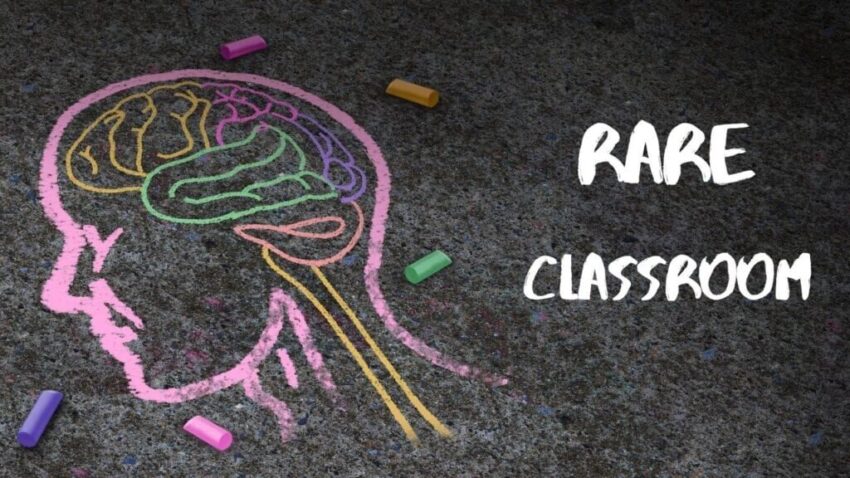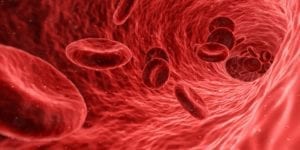Welcome to the Rare Classroom, a new series from Patient Worthy. Rare Classroom is designed for the curious reader who wants to get informed on some of the rarest, most mysterious diseases and conditions. There are thousands of rare diseases out there, but only a very small number of them have viable treatments and regularly make the news. This series is an opportunity to learn the basics about some of the diseases that almost no one hears much about or that we otherwise haven’t been able to report on very often.
Eyes front and ears open. Class is now in session.

The disease that we will be learning about today is:
Glucose Transporter Type 1 Deficiency Syndrome
Also called GLUT DS, GLUT1 deficiency syndrome, or De Vivo disease.
What is Glucose Transporter Type 1 Deficiency Syndrome?
- Glucose Transporter Type 1 Deficiency Syndrome is also known as Glut1 Deficiency, G1D, Glut1 DS, or De Vivo Disease
- Glut 1 DS is a genetic disorder that impairs brain metabolism
- In this syndrome, glucose is not transported properly into the brain, resulting in impaired brain energy
- Having Glut1 DS means that a person’s cells do not pick up and transport glucose to the brain properly. Glucose is the principal source of fuel to the brain.
- First discovered in 1991 by Dr. Darryl DeVivo at the Colleen Giblin Laboratories, Columbia Presbyterian Medical Center
- Children with this disorder have a myriad of physical and mental disabilities, ranging from mild to so severe that they cannot walk or talk
- Glut1 deficiency syndrome affects males and females in equal numbers
- Because GLUT1 DS may go unrecognized or misdiagnosed, determining its true frequency in the general population is difficult
- Studies suggest a range of 3,000 to 7,000 GLUT1 DS patients in the United States
- The incidence/prevalence in Queensland, Australia is believed to be approximately 1:90,000
How Do You Get It?
- GLUT1 DS is an inherited disorder
- It is caused by mutations in the SLC2A1 gene
- The SLC2A1 gene provides instructions for producing a protein: the glucose transporter protein type 1 (GLUT1)
- The SLC2A1 gene mutation reduces or eliminates the function of the GLUT1 protein
- When less GLUT1 is available to brain cells, brain development and function are impaired
- There are two ways to acquire the mutated gene:
- It can be inherited in an autosomal dominant pattern (one copy of the altered gene in each cell causes the disorder)
- It can result from new mutations in the gene that arise at conception. There is typically not a family history in these cases. This accounts for 90% of all cases.
- Rarely, it can also be inherited in an autosomal recessive pattern with both copies of the gene having cell mutations
What Are The Symptoms?
- What Does the Typical Child With GLUT1 DS Experience?
- Seizures usually start between 1 and 4 months of age
- Seizures are typically complex to begin with and later become more generalized
- Seizure frequency is variable
- Usually does not respond to anti-seizure medications
- An array of physical difficulties including:
- problems with crawling, jumping, walking, running, riding a bike, kicking a ball and many other typical childhood physical activities
- Problems with receptive and expressive speech
- May not be able to speak at all, or have slurred speech or difficulty accessing and articulating sounds and words and sentences
- Cognitive and Learning Delays
- Difficulty learning colors, letters and numbers
- Difficulty learning to count and read
- Microcephaly
- A condition in which a person’s head is significantly smaller than normal for their age and sex, based on standardized charts
- Some Symptoms may be present all the time, while others may come and go
- The most common symptoms include:
- Developmental delays and learning disabilities
- Stiffness caused by abnormal tensing of the muscles (spasticity)
- Difficulty in coordinating movements (ataxia)
- Speech abnormalities (dysarthria)
- Episodes of confusion
- Lack of energy (lethargy)
- Headaches
- Muscle twitches (myoclonus)
- Involuntary irregular eye movements, particularly in early infancy
- Lifelong epilepsy and seizures of various types
- Less common symptoms include:
- Spells of uncontrollable movements while awake (dyskinesia)
- Constant movements at rest and while awake (chorea)
- Episodes of paralysis of either side of the body, left or right (alternating hemiplegia)
- Hemolytic anemia (abnormal breakdown of red blood cells
- Other Variants
- About 10% of those with GLUT1 DS have a form known as non-epileptic GLUT1 DS
- Those with non-epileptic GLUT1 DS do not have seizures but may have:
- Developmental delay
- Intellectual disability
- Ataxia
- Dystonia
- Other variants of GLUT1 DS include:
- Paroxysmal choreoathetosis with spasticity (dystonia 9)
- Paroxysmal exercise-induced dyskinesia and epilepsy (dystonia 18)
- Certain types of epilepsy
How Is It Treated?
- There is no cure for GLUT1 DS
- The main treatment for GLUT1 DS is the ketogenic diet
- The very restrictive diet is also used in patients with seizure disorders that do not respond to conventional medications
- The diet is the only treatment that may control seizures in those with GLUT1 DS
- Strict compliance with this diet causes the body to produce ketones which are used by the brain as an alternate fuel source which can help with seizure control
- Children on the ketogenic diet need daily supplements as the diet does not meet nutritional needs
- Rules of the ketogenic diet include:
- High fat diet with heavy cream, butter and oils providing necessary fat
- Sweets/desserts are not allowed
- Carbohydrates not allowed or severely limited
- All foods must be weighed on a gram scale
- The diet is started under close medical supervision
Where Can I Learn More???
- Check out our cornerstone on this disease here.
- Learn more about this illness from the Glut1 Deficiency Foundation.








